OpenCV鱼眼校准切割了太多的结果图像
我用OpenCV校准用鱼眼镜头拍摄的图像.
我所使用的功能如下:
findChessboardCorners(...);找出刻度图案的角点。cornerSubPix(...);来细化找到的角点。fisheye::calibrate(...);对摄像机矩阵和畸变系数进行标定。fisheye::undistortImage(...);使用从校准中获得的摄像机信息来对图像进行反失真。
虽然得到的图像看起来确实不错(直线等等),但我的问题是,函数切断了图像的太多部分。
这是一个真正的问题,因为我用的是四台相机,它们之间有90度的距离,当很多边被切断时,它们之间就没有重叠的区域,因为我要缝制图像。
我研究了使用fisheye::estimateNewCameraMatrixForUndistortRectify(...),但是我无法得到好的结果,因为我不知道我应该把什么作为R输入,因为fisheye::calibrate的旋转矢量输出是3xN (其中N是校准图像的数量),fisheye::estimateNewCameraMatrixForUndistortRectify需要一个1x3或3x3。
下面的图像显示了我不失真结果的图像,以及我理想中想要的结果的例子。
不失真:

通缉结果实例:
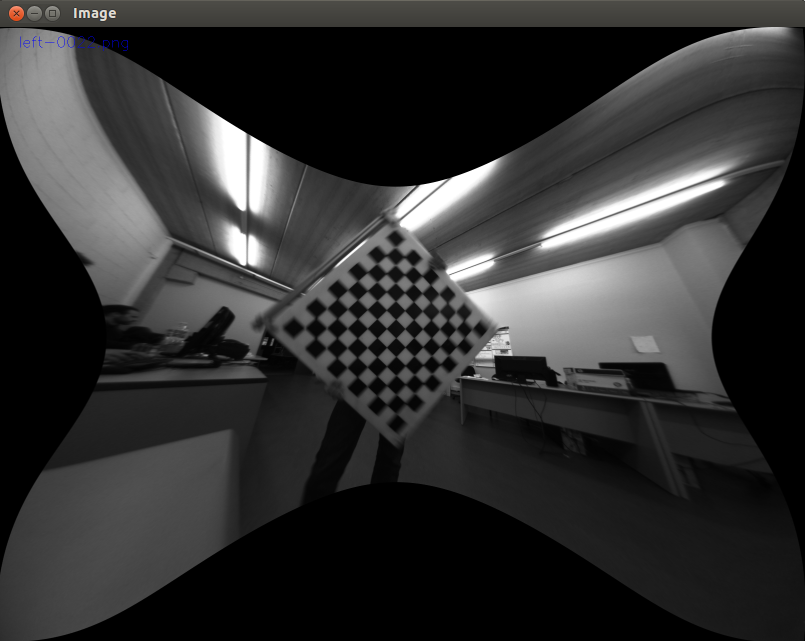
回答 5
Stack Overflow用户
发布于 2017-05-16 19:02:03
我想我遇到了一个类似的问题,在getOptimalNewCameraMatrix中寻找鱼眼的"alpha“结。
原始拍摄:
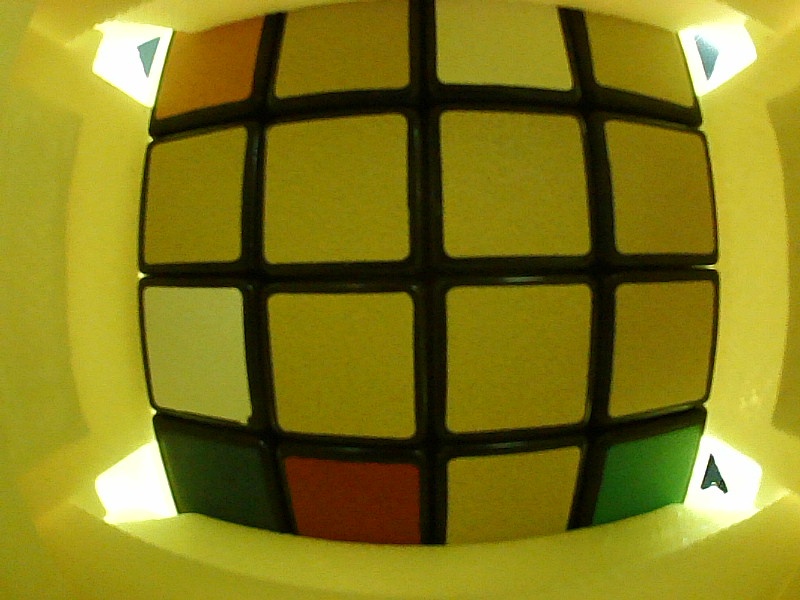
我用cv2.fisheye.calibrate校准它,得到K和D参数
K = [[ 329.75951163 0. 422.36510555]
[ 0. 329.84897388 266.45855056]
[ 0. 0. 1. ]]
D = [[ 0.04004325]
[ 0.00112638]
[ 0.01004722]
[-0.00593285]]这就是我想要的
map1, map2 = cv2.fisheye.initUndistortRectifyMap(K, d, np.eye(3), k, (800,600), cv2.CV_16SC2)
nemImg = cv2.remap( img, map1, map2, interpolation=cv2.INTER_LINEAR, borderMode=cv2.BORDER_CONSTANT)我觉得它切得太多了。我想看看整个魔方
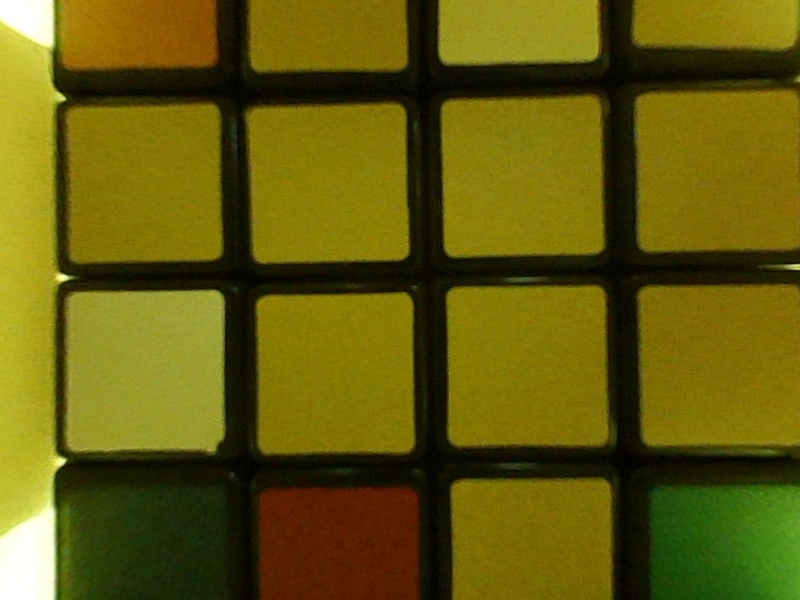
我用
nk = k.copy()
nk[0,0]=k[0,0]/2
nk[1,1]=k[1,1]/2
# Just by scaling the matrix coefficients!
map1, map2 = cv2.fisheye.initUndistortRectifyMap(k, d, np.eye(3), nk, (800,600), cv2.CV_16SC2) # Pass k in 1st parameter, nk in 4th parameter
nemImg = cv2.remap( img, map1, map2, interpolation=cv2.INTER_LINEAR, borderMode=cv2.BORDER_CONSTANT)塔达!
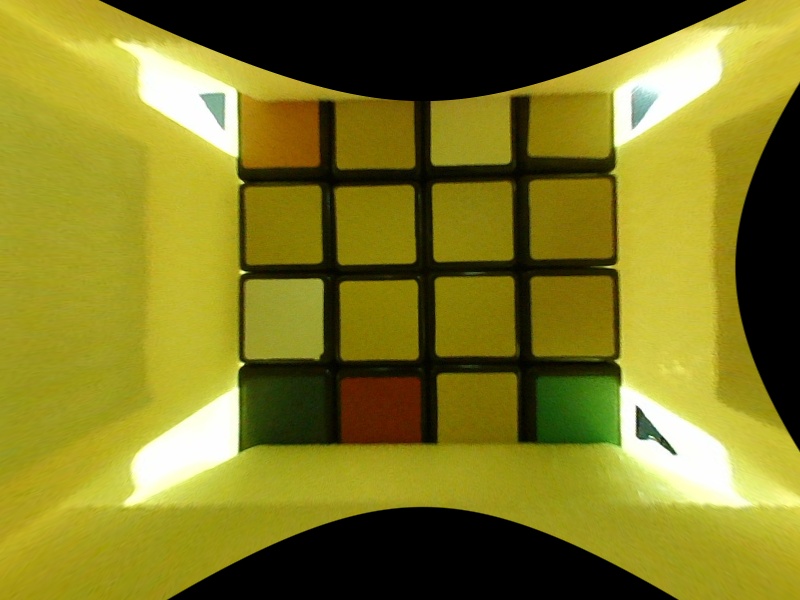
Stack Overflow用户
发布于 2018-11-27 12:59:23
正如保罗·伯克 这里所提到的
鱼眼投影不是“扭曲的”图像,也不是“扭曲”的过程。鱼眼和其他投影一样,是将3D世界映射到2D平面的多种方法之一,它与包括矩形透视投影在内的其他投影一样或多或少是“扭曲”的。
要获得不需要图像裁剪的投影(并且您的相机有~180 ),您可以使用这样的方法将鱼眼图像投影到一个正方形中:
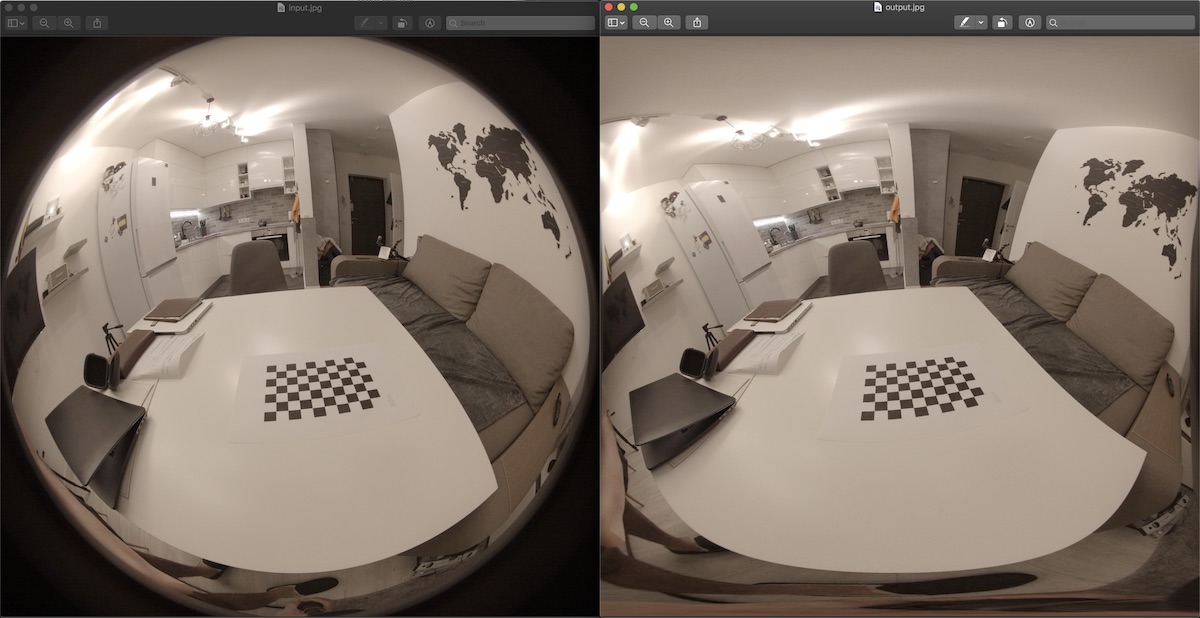
源代码:
#include <iostream>
#include <sstream>
#include <time.h>
#include <stdio.h>
#include <opencv2/core/core.hpp>
#include <opencv2/imgproc/imgproc.hpp>
#include <opencv2/calib3d/calib3d.hpp>
#include <opencv2/highgui/highgui.hpp>
// - compile with:
// g++ -ggdb `pkg-config --cflags --libs opencv` fist2rect.cpp -o fist2rect
// - execute:
// fist2rect input.jpg output.jpg
using namespace std;
using namespace cv;
#define PI 3.1415926536
Point2f getInputPoint(int x, int y,int srcwidth, int srcheight)
{
Point2f pfish;
float theta,phi,r, r2;
Point3f psph;
float FOV =(float)PI/180 * 180;
float FOV2 = (float)PI/180 * 180;
float width = srcwidth;
float height = srcheight;
// Polar angles
theta = PI * (x / width - 0.5); // -pi/2 to pi/2
phi = PI * (y / height - 0.5); // -pi/2 to pi/2
// Vector in 3D space
psph.x = cos(phi) * sin(theta);
psph.y = cos(phi) * cos(theta);
psph.z = sin(phi) * cos(theta);
// Calculate fisheye angle and radius
theta = atan2(psph.z,psph.x);
phi = atan2(sqrt(psph.x*psph.x+psph.z*psph.z),psph.y);
r = width * phi / FOV;
r2 = height * phi / FOV2;
// Pixel in fisheye space
pfish.x = 0.5 * width + r * cos(theta);
pfish.y = 0.5 * height + r2 * sin(theta);
return pfish;
}
int main(int argc, char **argv)
{
if(argc< 3)
return 0;
Mat orignalImage = imread(argv[1]);
if(orignalImage.empty())
{
cout<<"Empty image\n";
return 0;
}
Mat outImage(orignalImage.rows,orignalImage.cols,CV_8UC3);
namedWindow("result",CV_WINDOW_NORMAL);
for(int i=0; i<outImage.cols; i++)
{
for(int j=0; j<outImage.rows; j++)
{
Point2f inP = getInputPoint(i,j,orignalImage.cols,orignalImage.rows);
Point inP2((int)inP.x,(int)inP.y);
if(inP2.x >= orignalImage.cols || inP2.y >= orignalImage.rows)
continue;
if(inP2.x < 0 || inP2.y < 0)
continue;
Vec3b color = orignalImage.at<Vec3b>(inP2);
outImage.at<Vec3b>(Point(i,j)) = color;
}
}
imwrite(argv[2],outImage);
}Stack Overflow用户
发布于 2020-03-04 08:15:00
您需要使用fisheye::estimateNewCameraMatrixForUndistortRectify和R=np.eye(3) (单位矩阵)和balance=1来获取所有像素:
new_K = cv2.fisheye.estimateNewCameraMatrixForUndistortRectify(K, D, dim, np.eye(3), balance=balance)
map1, map2 = cv2.fisheye.initUndistortRectifyMap(scaled_K, D, np.eye(3), new_K, dim, cv2.CV_32FC1)
# and then remap:
undistorted_img = cv2.remap(img, map1, map2, interpolation=cv2.INTER_LINEAR, borderMode=cv2.BORDER_CONSTANT)https://stackoverflow.com/questions/34316306
复制相似问题

